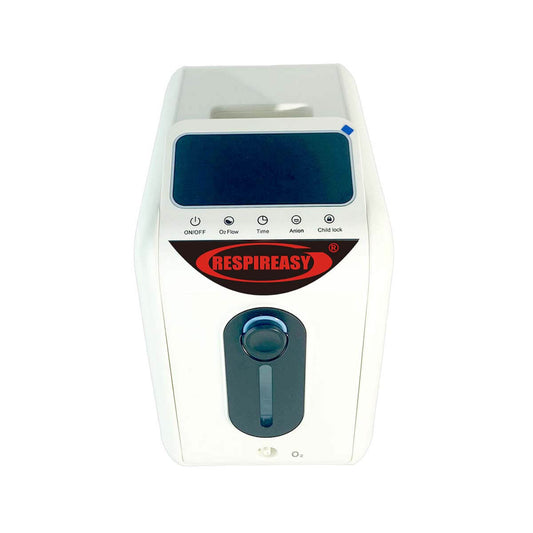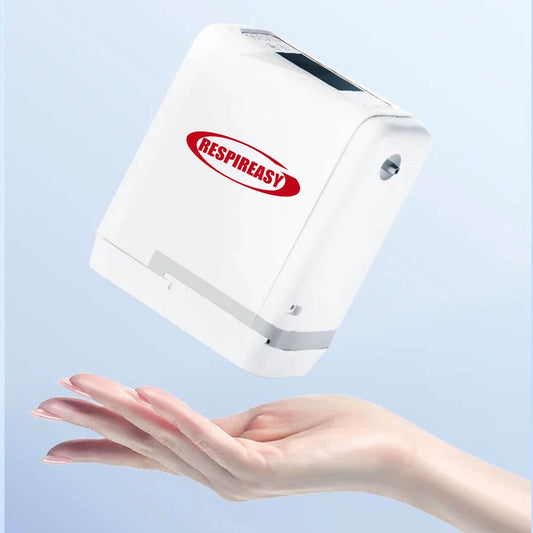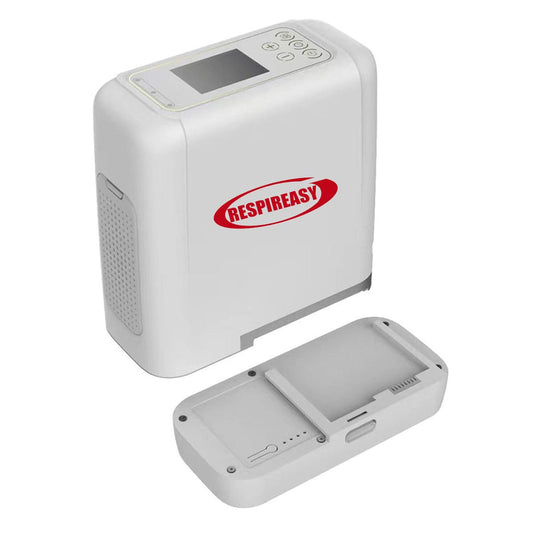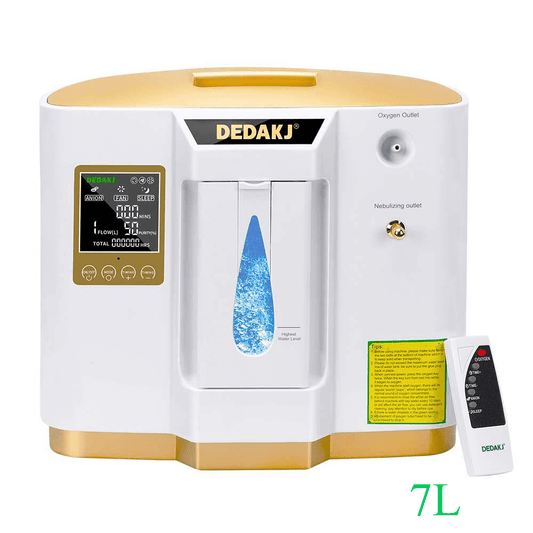What You Must Know About Human Blood Oxygen Saturation
Blood oxygen saturation
---by DEDAKJ oxygen cocnentrator supplier
 Blood oxygen usually refers to the oxygen in the blood. Relatively speaking, the higher the oxygen content in the blood, the better the human metabolism. However, the blood oxygen in the human body has a certain saturation. Too low will cause insufficient oxygen supply to the body, and too high will cause cell aging. As an important physiological parameter of respiratory circulation, blood oxygen saturation can reflect the body's oxygen supply:
Blood oxygen usually refers to the oxygen in the blood. Relatively speaking, the higher the oxygen content in the blood, the better the human metabolism. However, the blood oxygen in the human body has a certain saturation. Too low will cause insufficient oxygen supply to the body, and too high will cause cell aging. As an important physiological parameter of respiratory circulation, blood oxygen saturation can reflect the body's oxygen supply:
- When blood oxygen is 95%-99%, it is the normal range of human blood oxygen.
- When blood oxygen is 91%-94%, the body is in a state of mild oxygen deficiency, and the human body may experience chest tightness and shortness of breath.
- When blood oxygen is lower than 90%, the body is in a state of insufficient oxygen supply, and may feel difficulty breathing or dizziness. Continuous low blood oxygen will cause damage to organs.

What is blood oxygen?
Blood oxygen refers to the oxygen in the blood. The higher the oxygen content in the blood, the better the human metabolism will be. The human body's blood oxygen has a certain saturation (SpO₂), and blood oxygen saturation is an important vital sign.
What is blood oxygen saturation?
Blood oxygen saturation is the ratio of oxygen content to oxygen capacity.
The so-called oxygen capacity refers to the maximum amount of oxygen that hemoglobin can bind to in 100 ml of blood. The so-called oxygen content refers to the amount of oxygen that hemoglobin actually binds to in 100 ml of blood.
So, what value should blood oxygen saturation be maintained at under normal circumstances? When a healthy person is quiet and inactive, the blood oxygen saturation of arterial blood is higher than 95%, about 98%, while the level of venous blood is about 75%.
The difference in oxygen saturation between arterial blood and venous blood is only 98% to 75%. When the blood oxygen saturation of arterial blood decreases, although it seems that the value decreases not much, it is already a large part of this more than 20%, so it has a great impact on the human body.
Generally speaking, when the blood oxygen saturation of adult arterial blood is greater than 95%, it means that the blood oxygen level is within the normal range. Once it is lower than 95%, we should be alert. If it is lower than 90%, we definitely need to go to the hospital for treatment.
The next question is, under what circumstances will the oxygen saturation of arterial blood decrease? There are many reasons for this, and one of the more important ones is lung function. Whether it is when there is a problem with the pulmonary ventilation function or the gas exchange function, the blood oxygen saturation will decrease.
The reason is very simple.
Oxygen is combined with hemoglobin in the lungs. If there is a problem with the lung function, hemoglobin, as a freight train, cannot load oxygen in time, and the oxygen content in the blood will naturally decrease. It is reflected in the test value, that is, the blood oxygen saturation decreases. Simply put, the value of blood oxygen saturation can also give us an indirect understanding of the lung condition.
What causes low blood oxygen saturation
There are many reasons for low blood oxygen saturation, that is, low blood oxygen saturation means that the body may have functional disorders and diseases. The common reasons are as follows:
01 Hypoxia in the body
The oxygen content in the breathing air decreases, such as in the plateau, which may cause a decrease in blood oxygen saturation.02 Poisoning factors
Various poisonings can cause a decrease in blood oxygen saturation, such as drug poisoning, ketoacidosis, lactic acidosis, etc.
03 Disease factors
Ventilation dysfunction, diffusion dysfunction, and ventilation/blood flow imbalance can all lead to decreased blood oxygen saturation.
It should be pointed out that normal people will also experience decreased blood oxygen saturation in the following situations:
01 Vigorous exercise
Vigorous exercise will affect the rheology of the blood, resulting in a decrease in blood oxygen content. Due to physical fatigue, it will cause functional failure and affect the body's aerobic capacity.
02 Pregnancy
Pregnant women consume more oxygen during pregnancy. If the oxygen intake capacity decreases, hypoxia will occur, affecting the growth and development of the fetus. Pregnant women need to maintain sufficient oxygen in the body and maintain a good physical function during pregnancy. Blood oxygen monitoring should be performed daily to promptly detect if the body is hypoxic and replenish oxygen in time.

03 High-intensity work
Working overtime for too long in a closed environment and operating under high load can easily lead to hypoxia. Long-term hypoxia can lead to physical failure, a decrease in metabolic capacity, memory, and immunity, and thus illness.
04 Other reasons
Insufficient blood supply to the fingers, low temperature, too short clipping time, use of nail art and nail polish, finger movement and other factors may cause the oximeter to fail to measure or inaccurate measurement values.
In addition, the following easily overlooked situations in life can also lead to reduced blood oxygen saturation:
01 Snoring
Snoring causes respiratory obstruction, leading to hypoxia, poor sleep quality, and in severe cases, organ damage.

02 Anemia
Anemic patients have reduced hemoglobin content, and hemoglobin has the function of carrying oxygen. Therefore, in anemic conditions, especially severe anemia, the blood's oxygen-carrying capacity decreases, so the blood oxygen saturation is at a low level.
03 Alcoholism
The human body needs three units of oxygen to completely decompose one unit of alcohol. Therefore, hypoxia is one of the important manifestations of drunkenness. However, long-term alcoholics have formed a certain tolerance to alcohol and hypoxia, and are basically unable to detect when they are slightly drunk. Such people need to pay more attention to monitoring blood oxygen changes when drinking.
What measures should be taken when the blood oxygen saturation is low?
What measures should be taken when the blood oxygen saturation is less than 94%?
Seek medical help
Contact a medical professional for evaluation as soon as possible to determine the cause of low blood oxygen saturation and develop a treatment plan based on the specific situation.
Immediate oxygen therapy
Increase the oxygen content in the blood and relieve the symptoms of hypoxia. Oxygen therapy can be performed through nasal cannula, mask, etc.
The COPD patients can do the oxygen breathy at home with the DEDAKJ oxygen concentrators machine.


Monitor blood oxygen level
Use a pulse oximeter or other medical equipment to monitor blood oxygen saturation regularly to ensure that it is stable within a safe range.
Drug therapy
In the case of low blood oxygen saturation, drug therapy is one of the treatment methods, but the specific medication requires the doctor to consider comprehensively according to the patient's cause, condition and physical condition.
Respiratory support
If the patient's respiratory function is impaired, non-invasive or invasive mechanical ventilation support may be required.
Adjust lifestyle
Keep indoor air circulation, avoid smoking and exposure to harmful gases, and maintain good living habits and indoor air quality.
It should be noted that blood oxygen saturation below normal is a situation that requires urgent attention, and quick action should be taken and follow the guidance of medical professionals.



















































